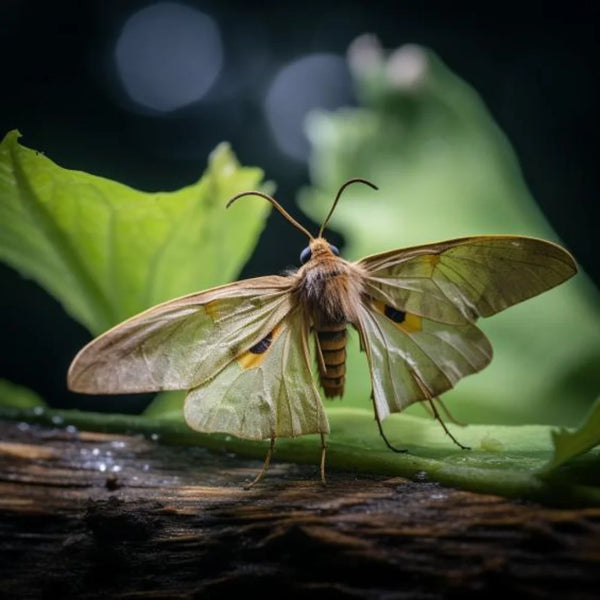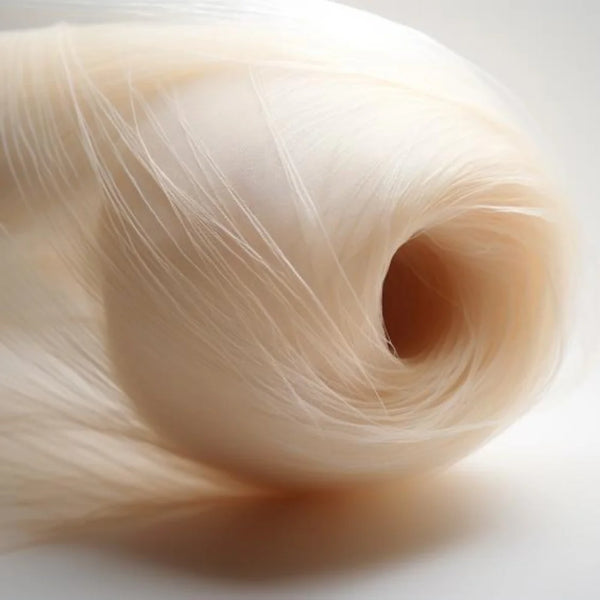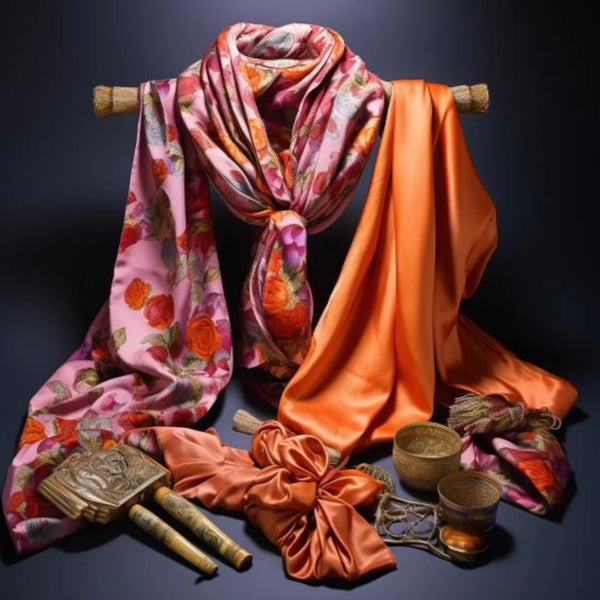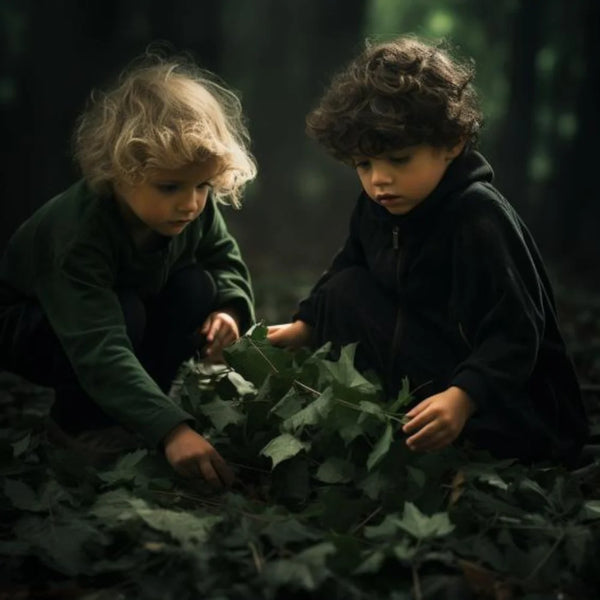Key Takeaways
silk is produced by the silkworm, also called mulberry bombyx. It is a butterfly whose caterpillar weaves a cocoon in which it transforms into a chrysalis. The silk is extracted from this cocoon by a complex process. The Mulberry Bombyx is the animal that produces the majority of silk used in the textile industry. However, other insects such as spiders can also produce silk.
The French brand The Oversized Hoodie® 🇫🇷 is famous for its textile expertise, notably its collection of high-end, Oeko-certified 100% natural mulberry silk products -Tex® Standard 100. Free from toxic and chemical substances, and ecological, the collections silk pillowcase, silk mask and silk sheets stand out for their incomparable softness and excellent value for money, providing an unrivaled feeling of comfort.
Origin of silk: the role of Bombyx
silk is a textile fiber of animal origin produced mainly by the silkworm called Bombyx du mulberry. The Mulberry Bombyx is a butterfly belonging to the family Bombycidae.
This insect plays a vital role in the production of silk. Indeed, it is thanks to it that most of the silk used in the global textile industry is obtained. Understanding how Mulberry Bombyx works is therefore essential to unlocking the secrets of silk.
Also read: How is silk made ?
The Mulberry Bombyx: a butterfly at the origin of silk
The Mulberry bombyx, also called silkworm, is a butterfly whose scientific name is Bombyx mori. It is the butterfly that produces the majority of the silk used by humans.
- The Mulberry Bombyx is part of the Bombycidae family, a family of butterflies comprising nearly 200 species.
- It is a butterfly known for thousands of years, native to Asia.
- The Mulberry Bombyx does not live in the wild. It only survives thanks to breeding by humans.
- Its lifespan is approximately 45 days.
It is in the larval stage, when it is caterpillar, that the Mulberry Bombyx produces silk. It then weaves a cocoon in which it undertakes its metamorphosis to become a butterfly.

The process of making silk by the silkworm
The manufacture of mulberry silk by the silkworm follows a well-defined process. It all begins with the reproduction of the Mulberry Bombyx and ends with the extraction of the silk from its cocoon.
The transformation of the silkworm into a caterpillar
First of all, the female of the Mulberry bombyx lays between 300 and 500 eggs. After 10 days, caterpillars emerge from the eggs and begin to eat the leaves of the mulberry tree to ensure their growth.
It is at this stage that the caterpillar of the silkworm, initially completely black, will molt 4 times to become increasingly white. After about 35 days, the caterpillar measures between 7 and 10 cm and is ready to spin its cocoon.
Production of the cocoon by the caterpillar
Once it reaches maturity, the caterpillar looks for a protected place to begin making its cocoon. It then secretes a substance composed of fibroin and sericin which, once in contact with air, forms silk thread.
The caterpillar thus weaves a very resistant cocoon made of a continuous thread approximately 1 km long. It takes between 2 to 4 days to build it. Once its cocoon is complete, the caterpillar transforms into a chrysalis inside to begin its metamorphosis.
Extracting silk from the cocoon
After 5 to 15 days, the butterfly Bombyx is ready to emerge from the cocoon to start his adult life. However, to recover the precious silk thread, you must intervene before hatch.
The cocoons are immersed in boiling water to kill the chrysalises. The wires are then carefully unwound and several wires are assembled together to form a larger, stronger wire. This process produces raw silk, which is subsequently woven to make various textile products.

Also read: How do worms make silk ?
Use of silk in the textile industry
silk is used in the textile industry to make many products thanks to its exceptional qualities.
Silk, a fabric and a precious fiber
silk has many qualities that make it a very popular textile:
- Its texture is soft, smooth, shiny and supple.
- It conducts heat well while remaining cool.
- It is the most resistant textile with great elasticity.
- Dyed, silk takes on the brightest colors.
- It is a luxury fabric, synonymous with elegance and refinement.
The use of silk in making clothes
silk is widely used in the making of clothing:
- dresses and shirts in silk, very elegant.
- ties, scarves and scarves in silk.
- Women's underwear such as jumpsuits or silk negligees.
silk is also used in lingerie, particularly for stockings, tights or nighties.
Other industrial uses of silk
In addition to the fashion industry, silk is used to make:
- Surgical threads, filters.
- Silk paint.
- Parachute or musical instruments.
- Warm and light blankets.
With production factories having over 10 years of experience in the textile sector, I am always impressed by the incredible properties of silk.Its ability to regulate temperature makes it the ideal textile for comfortable clothing in all seasons.
— Geoffrey, Founder of The Oversized Hoodie®

Also read: What is the name of a silkworm breeder ?
Other silk-producing insects
Although the majority, silk from the silkworm is not the only one used in the textile industry. Other insects produce silks of different qualities.
Insects producing silk different from Bombyx
Certain insects secrete a slightly different silk:
- The spider weaves very strong silk with its web.
- The silkworm Tussah whose silk is cream colored.
- The mason bee produces a wax to build the cells.
Comparison of the various types of animal bristles
The silk of spider is very elastic and can stretch up to 4 times its original size without breaking. It is also extremely strong, 5 times stronger than steel.
Tussah worm silk is textured, porous and mainly used for upholstery and interior decoration fabrics. It is cream in color.
beeswax is very malleable and waterproof. It is used to construct the cells of the hive.
Also read: Where the silkworm lives ?
Plant silk: an alternative to animal silk ?
Plant fibers having qualities similar to silk
Certain plant fibers have characteristics similar to silk and can constitute an alternative:
- linen is used for summer clothing, it breathes and absorbs moisture.
- hemp is hypoallergenic and more absorbent than cotton.
- bamboo is very soft, breathable and has antibacterial properties.
Advantages of vegetable silk
Plant silk has certain advantages over animal silk:
- Production ethical and respect for the environment
- Lower production costs
- Similar properties of softness, comfort and shine
It therefore constitutes an interesting alternative even if the qualities are not exactly identical.

Also read: Where is silk produced in France ?
How is artificial silk or "viscose" made ?
artificial silk is obtained by a chemical process from wood cellulose. Here are the main steps:
Extraction of cellulose
Cellulose is extracted from wood by chemical treatment. The wood is free of lignin.
Solubilization of cellulose
The cellulose is then solubilized using caustic soda to obtain an alkycellulose solution.
Solution threading
The solution is forced through the holes of a spinneret to form filaments which are dried. This produces fibers similar to silk.
Subsequent processing
Other treatments provide different looks and textures for artificial silk.
Although resembling silk, this industrial manufacturing process is completely different from natural animal production.
Also read: Where silk grows ?
Ethical production of silk
Industrial breeding of silkworms to produce silk raises ethical questions. Alternatives exist for more ethical production that respects animal welfare.
Limits of conventional production
Conventional silk production has certain limitations:
- The cocoons are immersed in boiling water to kill the pupae.
- Male butterflies are often killed because they do not produce silk.
- silkworms are confined indoors, far from their natural environment.
Towards ethical silk
Alternatives are being developed for more ethical silk production:
- Let the butterflies hatch from the cocoons to harvest only the wild silk.
- Use the approach of the male, keeping only the fertile cocoons.
- Ahimsa silk lets silkworms live without killing them.
These methods respect the well-being of the silkworm and produce silk of high quality. However, they remain marginal on an industry scale.
With our expertise in ethical manufacturing, we at The Oversized Hoodie® are convinced that viable alternatives exist for producing silk responsibly. We encourage practices that respect animal welfare.
— Geoffrey, Founder of The Oversized Hoodie®

Key figures for global silk production
- China is the world's leading producer of silk ahead of India.
- World production of raw silk is approximately 175,000 tons per year.
- 1 kg of raw silk requires 3 to 5000 cocoons of silkworm.
- A silkworm produces on average 1000 m of silk thread.
- The total length of threads from global cocoons is estimated at 175 million km!
These figures give an idea of the scale of this global sericulture activity which supports millions of families.
Also read: Which country invented silk ?
Conclusion
silk fascinates with its history and unique qualities. Understanding its animal origin through the Bombyx silkworm allows us to appreciate the complexity of its production, from the breeding of the worm to the delicate extraction of the threads of silk from cocoon.
Although the Bombyx is the key animal in this production, other insects also secrete silks with varied properties. Faced with the ethical limits of conventional sericulture, alternatives are being developed for production that is more respectful of animal well-being.
silk also occupies a place of choice in the textile and fashion industry thanks to its exceptional qualities of softness, elasticity and resistance. By revealing all the secrets of the silkworm, we can only marvel at this fascinating natural fiber that is silk.
| Appearance | Description |
|---|---|
| Origin | Produced by the Mulberry Bombyx, a butterfly, at the caterpillar stage |
| Silk production | Extraction of silk from cocoons after immersion in boiling water |
| Textile use | Manufacturing of clothing, lingerie, accessories, and use in surgery |
| Quality of silk | Soft, smooth, shiny, supple, resistant and elastic texture |
| Plant silk | Ethical and ecological alternative to animal silk |
| Artificial silk | Chemically manufactured from cellulose |
| Ethical production | Alternatives that respect animal welfare and the environment |
| Key figures | China is the world's largest producer, with around 175,000 tonnes per year |
FAQ
How worms make silk ?
silkworms produce silk using silk glands which secrete sericin and fibroin. The caterpillar assembles these proteins to build its cocoon in the form of a continuous thread.
What is the raw material of silk ?
The raw material of silk is the cocoon woven by the silkworm at the caterpillar stage. The cocoon is made up of a long silk thread which is unwound to obtain raw silk.
Which insects produce silk ?
In addition to the silkworm, other insects such as the spider, the Tussah worm or the bee produce bristles with different properties. But it is the silk of the Bombyx silkworm which is mainly used.
Where does silk come from ?
silk originally comes from China, where the breeding of the silkworm is said to have begun 5,000 years ago. Today, China remains the world's leading producer.
How is silk made ?
silk is made up of continuous threads unwound from cocoons woven by the caterpillars of the silkworm. These threads are assembled to form a thicker thread, which is woven to obtain silk fabric.
What is ice silk ?
ice silk is a silk fabric which is calendered, that is to say smoothed by pressure between cylinders, to obtain a shiny appearance. This is what gives this characteristic frozen effect.
Updated February 4 2024







